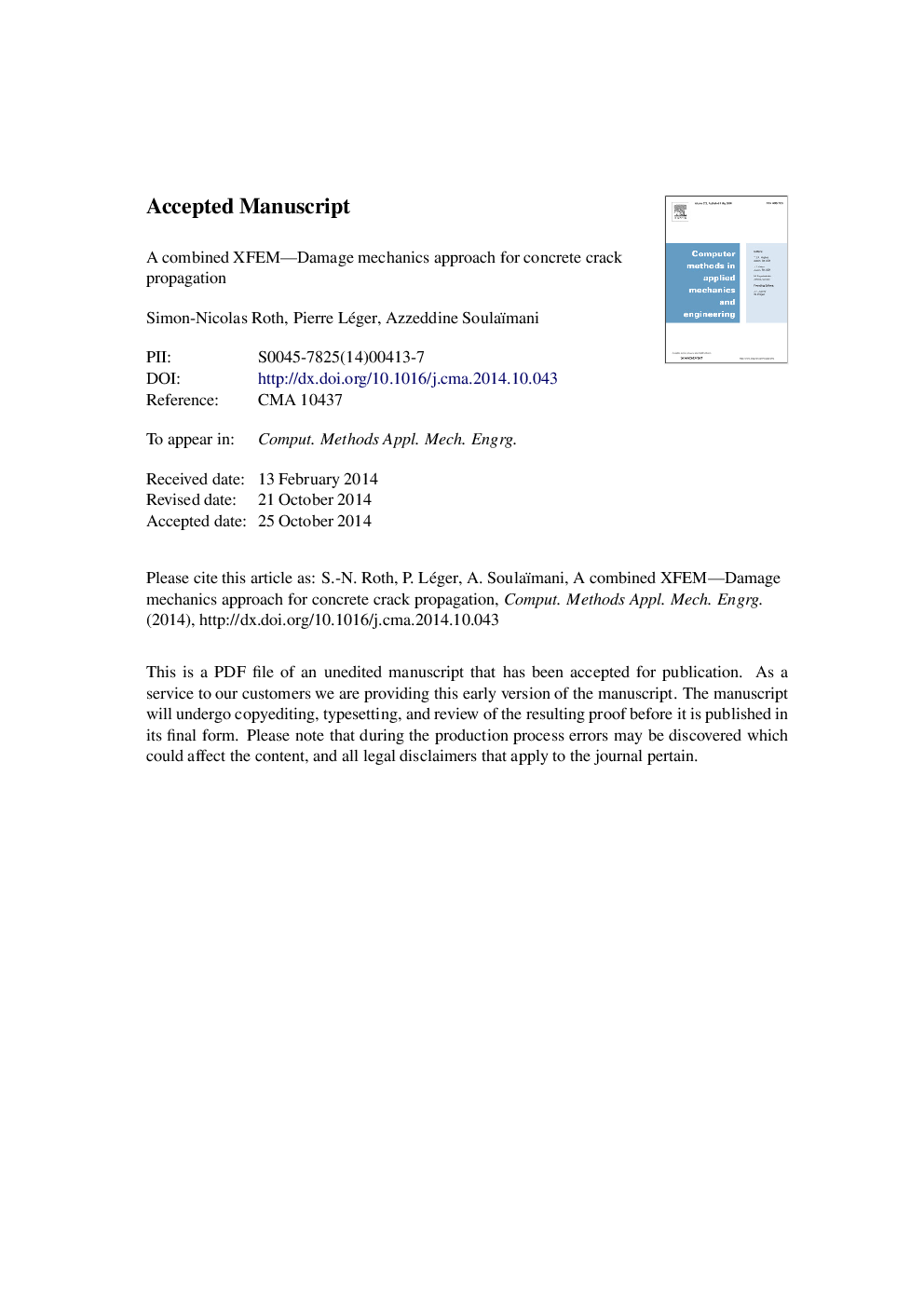| Article ID | Journal | Published Year | Pages | File Type |
|---|---|---|---|---|
| 6917244 | Computer Methods in Applied Mechanics and Engineering | 2015 | 22 Pages |
Abstract
This paper presents a crack model that couples the benefits of the damage mechanics approach and the extended finite element method (XFEM). A crack-tracking technique is developed to propagate the crack path along a single row of finite elements as a function of the stress-based nonlocal method. The level sets are computed to predict the crack path, and the path is corrected with the use of continuum damage mechanics. Once a certain level of damage is reached inside an element, the previously-computed level sets are used to apply the XFEM formulation. A cohesive XFEM formulation is used to transfer energy dissipation from the damage mechanics approach to the XFEM model. Using numerous test cases, it is shown that the model is mesh independent and that it removes the spurious stress transfer exhibited by continuum damage models. Various transition damage criteria are compared, and the optimal one is determined.
Related Topics
Physical Sciences and Engineering
Computer Science
Computer Science Applications
Authors
Simon-Nicolas Roth, Pierre Léger, Azzeddine Soulaïmani,
